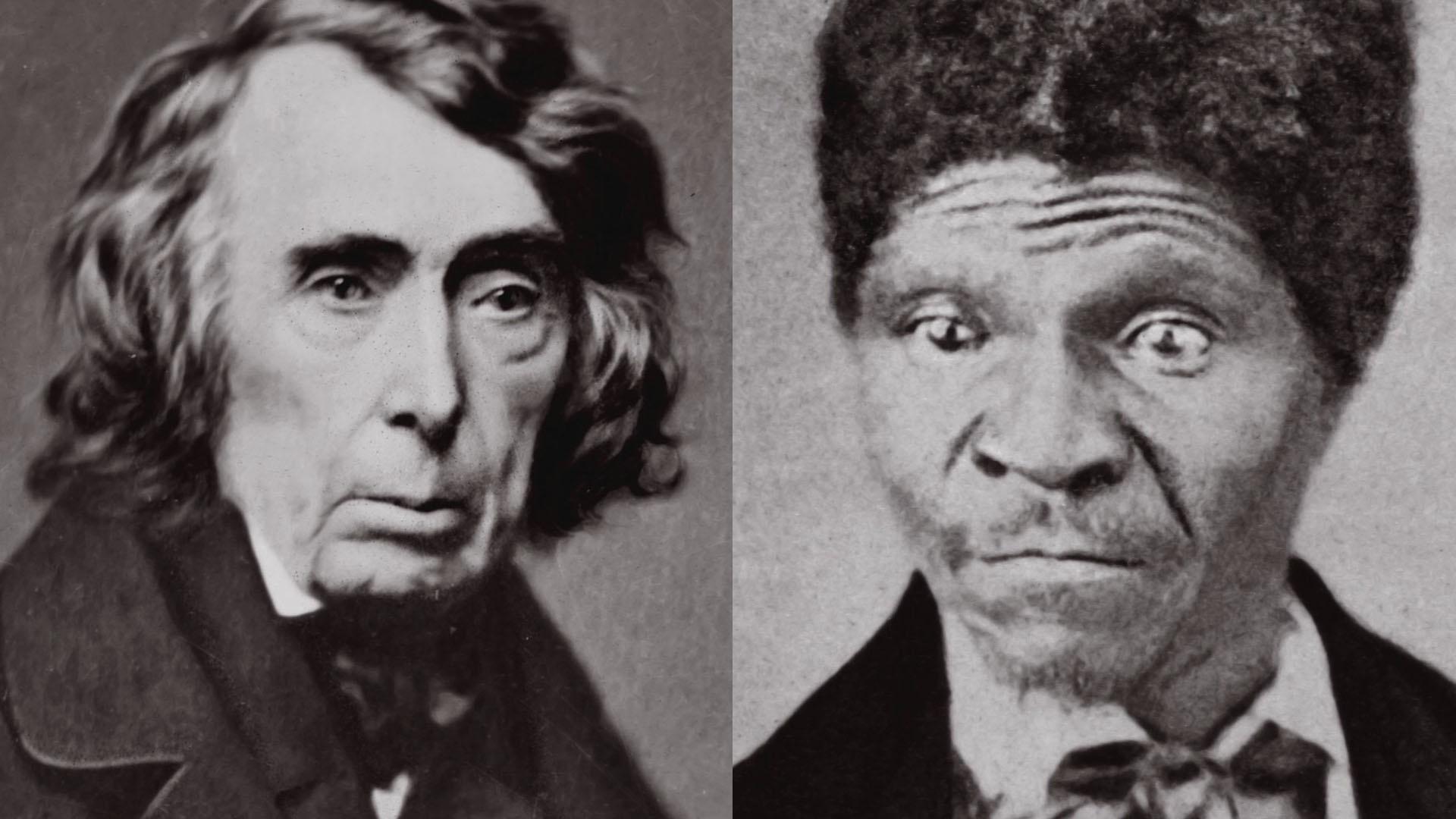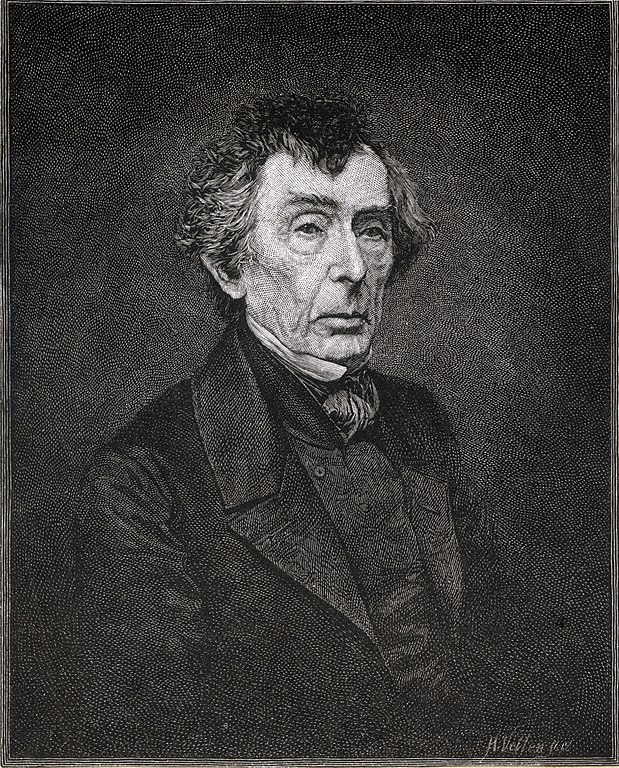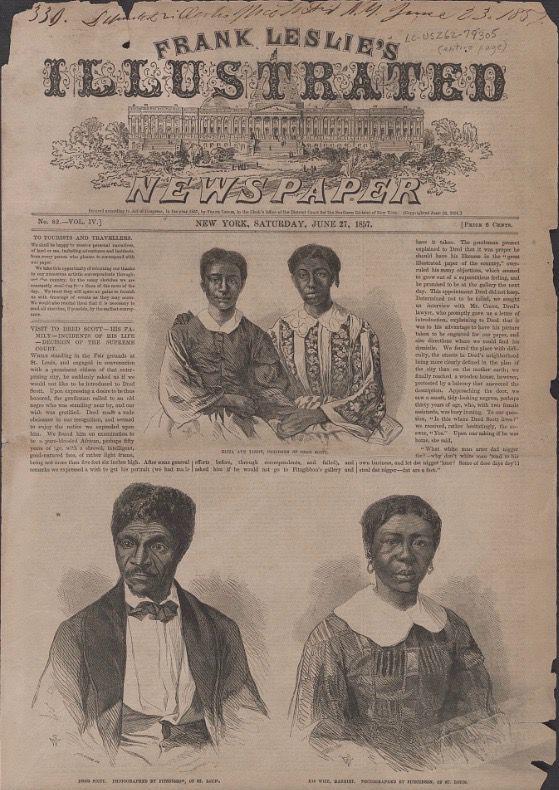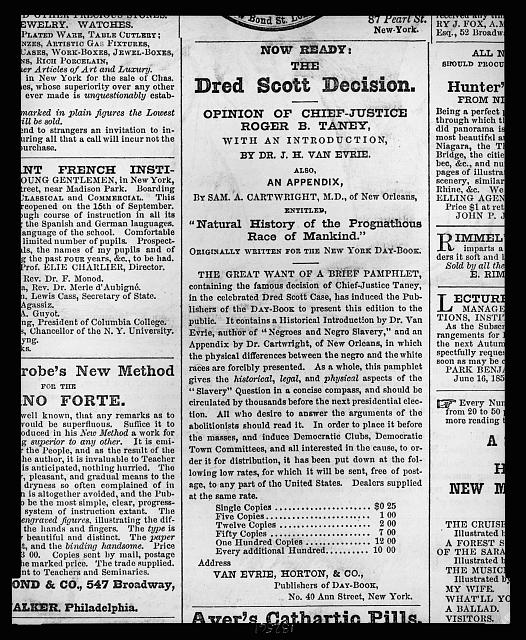Chief Justice Roger Taney made his contribution to the ideology of white supremacy when he asserted that blacks were a people apart, beyond the promise of the Declaration and the guarantees of the Constitution.
-
Winter 2021
Volume66Issue1
Editor's Note: H. W. Brands is a history professor at the University of Texas at Austin. He has written thirty books, including the just published The Zealot and the Emancipator, a dual biography of the abolitionist John Brown and President Abraham Lincoln, in which portions of this essay appeared.

As a young man, Roger Taney gave no sign of becoming the most notorious defender of slavery in the history of American jurisprudence. Indeed, the evidence pointed in the opposite direction. Taney practiced law in Frederick, Maryland, just below the Mason-Dixon Line, and was married to the sister of Francis Scott Key, an advocate for the legal rights of free blacks and the amelioration of the lot of slaves (and the lyricist of America’s eventual national anthem).
Taney joined Key and others in a legal-aid society that battled the kidnapping of free blacks into slavery. He meanwhile emancipated eleven slaves he had inherited, keeping only two who were, as he described them, “too old, when they became my property, to provide for themselves.”
In a widely noted law case Taney took the part of a Methodist preacher charged with inciting slave rebellion by a sermon sharply critical of slavery. The client was unpopular, being an outsider, from Pennsylvania, and annoyingly self-righteous besides.
Taney defended the preacher on free-speech grounds, but he went beyond the necessities of the case to indict slavery itself. He declared the institution a necessary evil, at best. “It was imposed upon us by another nation, while we were yet in a state of colonial vassalage,” he said. “It cannot be easily or suddenly removed. Yet while it continues, it is a blot on our national character, and every real lover of freedom confidently hopes that it will be effectually, though it must be gradually, wiped away, and earnestly looks for the means by which this necessary object may be best attained. And until it shall be accomplished, until the time shall come when we can point, without a blush, to the language held in the Declaration of Independence, every friend of humanity will seek to lighten the galling chain of slavery and better, to the utmost of his power, the wretched condition of the slave.”
Taney’s argument persuaded the jury, which acquitted his client. Nor did his indictment of slavery harm his political advancement. He became Maryland’s attorney general and then, after campaigning vigorously for Andrew Jackson, the attorney general of the United States. He took Jackson’s side against the Bank of the United States, when that institution polarized the country. And upon the death of John Marshall, Jackson promoted Taney to Chief Justice of the Supreme Court.
For twenty years the Taney court had little to do with the slavery question, which embroiled the rest of American government but left the federal judiciary largely alone. The Constitution gave the states control over slavery within their borders. Since independence the Northern states had abolished slavery, to no particular complaint from the South. And few Northerners, beyond the most ardent abolitionists, who cited a higher law than the Constitution, claimed the right to command Southern states to end slavery there.

As for slavery in the federal territories, that was a matter for Congress: first the Congress of the Articles of Confederation, with its 1787 ordinance banning slavery north of the Ohio River, and then the Congress of the Constitution, which had approved the Missouri Compromise, the Compromise of 1850 and the Kansas-Nebraska Act.
The slave question had surfaced in presidential politics most strikingly in the election of 1844, in which Democrat James Polk campaigned on a platform demanding the annexation of slave Texas. Presidential politics had shaped the Compromise of 1850, which was crafted with the potential veto of Zachary Taylor in mind. As things happened, Taylor suddenly died, and his successor, Millard Fillmore, was happy to accept what Henry Clay and Stephen Douglas produced. From that point forward, the slave question pervaded campaigns for presidential nominations and for the presidency itself.
But the judiciary remained aloof. State courts heard individual cases like those Roger Taney took part in, but on general policy judges and justices, especially of the federal government, deferred to the politicians. They did so, at any rate, until Chief Justice Taney took up slavery in the mid- 1850s. Why he did so, and why then, wasn’t easy to say.
Taney had long hewed to the belief that the Supreme Court and its justices should stay out of politics. “I never speak upon political issues of the day in politics, nor in mixed companies, nor do I enter into any argument, or ever express an opinion to friends who I know differ from me,” he replied to a Maryland congressman who had asked him to deny reports that he favored one candidate in a particular race. And he didn’t intend to start. To do otherwise would injure the court’s credibility.
Yet he did have views, and they changed over time, especially on slavery. Taney was a proud Southerner, though no longer a slaveholder, and he considered the South under assault by the North. His son-in-law inquired about his opinions on the campaign of 1856 — in particular, what would happen should victory go to Republican Frémont or Know-Nothing Fillmore? Taney professed to hear the death knell of Southern liberty in the triumph of either. Secession would provide no answer; nor would it even occur. “How can the Southern states divide, with any hope of success, when in almost every one of them there is a strong and powerful party, acting in concert with the Northern Know Nothings, and willing to hold power from the North, if they may be enabled thereby to obtain the honors and offices of the general government and domineer in their own states,” he wrote.
“The South is doomed to sink to a state of inferiority, and the power of the North will be exercised to gratify their cupidity and their evil passions, without the slightest regard for the Constitution.” True, there were voices in the South calling for armed resistance to Northern pretensions. “There are many bold and brave men at the South who have no vassal feeling to the North,” Taney said. Some might attempt to fight. “But what can they do, with a powerful enemy in their midst? I grieve over this condition of things, but it is my deliberate opinion that the South is doomed, and that nothing but a firm united action, nearly unanimous in every state, can check Northern insult and Northern aggression.”
Taney’s gloom reflected something personal, too. In 1855 his wife and daughter were carried off by yellow fever. Taney’s family had been his refuge from the storms of public life; this refuge was now denied him. He managed to order an inscription from David’s lament over Saul and Jonathan to be chiseled upon their joint grave: “Lovely and comely in their life / Even in death they were not divided.” But he was devastated. Friends wondered if he would be able to carry on.

In the same year that Roger Taney joined the Supreme Court, Dred Scott traveled to Illinois. Scott was a black man, born into slavery in southern Virginia and transported by his owner to Alabama and then Missouri, where he was sold as a personal servant to an army doctor named John Emerson. The army regularly moved Emerson from post to post, and in 1836 it ordered him to a fort in Illinois. Dred Scott seems to have made no effort to claim his freedom while in Illinois, and he traveled on without recorded complaint to Wisconsin Territory, also free soil. There he married a woman named Harriet Robinson, another slave, who was sold by her owner to John Emerson. Emerson was transferred back to Missouri, but he left Dred Scott and Harriet in Wisconsin, hiring them out to fellow officers.
Emerson subsequently married Eliza Sanford and in 1840, four years after leaving Missouri with Dred Scott, sent for Scott, his wife and a daughter born to the couple. Dred Scott returned to Missouri, taking his wife and child with him. Three years later Emerson died, bequeathing the Scotts to his wife.
Dred and Harriet Scott in time decided to assert their freedom based on their residence in free territory. With the aid of lawyers not unlike the young Roger Taney, they sued their mistress. Missouri courts had formulated a “once free, always free” rule declaring that residence on free soil prevented a person transported to Missouri from being enslaved. But when the case appeared before the Missouri supreme court, that tribunal abandoned the old doctrine. “Times now are not as they were when the former decisions on this subject were made,” the court explained. The Scotts were still slaves.
The Scotts turned to the federal court system. The case became Dred Scott v. Sandford after Mrs. Emerson transferred ownership of Dred Scott to her brother, and a clerk of the court misspelled Sanford’s name. The federal district court in St. Louis ruled against Scott, who appealed to the Supreme Court.
Roger Taney was looking for a case that would give the Supreme Court a chance to rule on the issue that had tied the other branches of government in knots. He was also looking for something to ease his grief at the loss of his wife and daughter. Taney had been a Democratic political operative before becoming a judge, and he postponed a decision in the Dred Scott case until after Democrat James Buchanan was safely elected and inaugurated. Then he sallied into the midst of the fight.
In March 1857, Taney read the opinion of the court in the Dred Scott case. Taney was days from his eightieth birthday; though tall and lanky, he stooped when he walked, and his hand shook as he held the papers from which he spoke. He had outlived nearly all those who had known him in his days defending slaves; the audience in the court expected to hear from a Southerner and a Democrat. They weren’t surprised when Taney and six other justices decided against Dred Scott and his family.
But many were surprised at the reasoning. Typically, the Supreme Court decides cases on the narrowest grounds possible, setting broad precedents only when necessary. Taney had concluded that broad precedent on the slave question was quite necessary. Dred Scott’s suit failed because Scott lacked standing to bring a suit in federal court, Taney said. Scott was not a citizen under the meaning of the Constitution. Nor were any other Africans or their descendants. “They had for more than a century before been regarded as beings of an inferior order, and altogether unfit to associate with the white race either in social or political relations, and so far inferior that they had no rights which the white man was bound to respect, and that the negro might justly and lawfully be reduced to slavery for his benefit,” Taney read.
Scott’s lawyers had cited the egalitarian promise of the Declaration of Independence in their client’s favor; Taney dismissed this. To be sure, Jefferson’s immortal assertion about equality seemed to encompass “all men,” as the words of the Declaration said. “But it is too clear for dispute that the enslaved African race were not intended to be included, and formed no part of the people who framed and adopted this declaration, for if the language, as understood in that day, would embrace them, the conduct of the distinguished men who framed the Declaration of Independence would have been utterly and flagrantly inconsistent with the principles they asserted, and instead of the sympathy of mankind to which they so confidently appealed, they would have deserved and received universal rebuke and reprobation.”

After all, Jefferson — and Washington and Madison and nearly every other Southern delegate to the Continental Congress — were slaveholders. Taney concluded from all this that Africans and their descendants in America, whether slaves or free blacks, were not citizens under the Constitution, and never could be.
Two decades earlier John Calhoun, amid a rising chorus of criticism from Northern abolitionists, had declared slavery not a necessary evil, as the young Roger Taney and most slaveholders had previously characterized it, but a “positive good.” Calhoun argued that slavery uplifted Africans and their descendants, besides stabilizing Southern society. Calhoun’s view gradually took hold among Southern whites, evidently including Taney, whose contribution to the ideology of white supremacy was his assertion in the Dred Scott case that blacks were a people apart, beyond the promise of the Declaration and the guarantees of the Constitution.
Yet Taney wasn’t finished. He could have dismissed the case over Scott’s lack of standing. But that wouldn’t have served his larger purpose, which was to settle the issue of slavery in the territories once and for all. Taney, with many other Southerners by this time, deemed the Missouri Compromise to have been an infringement on South-ern rights — namely, the property right of Southern slaveholders to take their slaves with them into the federal territories.
Taney found warrant for his view in the Bill of Rights, which dealt chiefly, but not exclusively, with the rights of persons. “The rights of property are united with the rights of person, and placed on the same ground, by the fifth amendment to the Constitution, which provides that no person shall be deprived of life, liberty, and property, without due process of law,” he wrote. “And an act of Congress which deprives a citizen of the United States of his liberty or property merely because he came himself or brought his property into a particular Territory of the United States, and who had committed no offence against the laws, could hardly be dignified with the name of due process of law.” Taney continued, “Upon these considerations, it is the opinion of the court that the act of Congress which prohibited a citizen from holding and owning property of this kind in the territory of the United States north of the line therein mentioned is not warranted by the Constitution, and is therefore void.”
This part of the decision was especially striking. Not only was it unnecessary to the verdict in the case, but it beat a dead horse — the Missouri Compromise — which had been put down by the Kansas-Nebraska Act.
Yet the very lack of necessity for this ruling rendered Taney’s meaning the more unmistakable. Congress had no power to bar slavery from the territories. The Republicans and other enemies of the South might froth and fume, but they were impotent to halt the spread of slavery.

